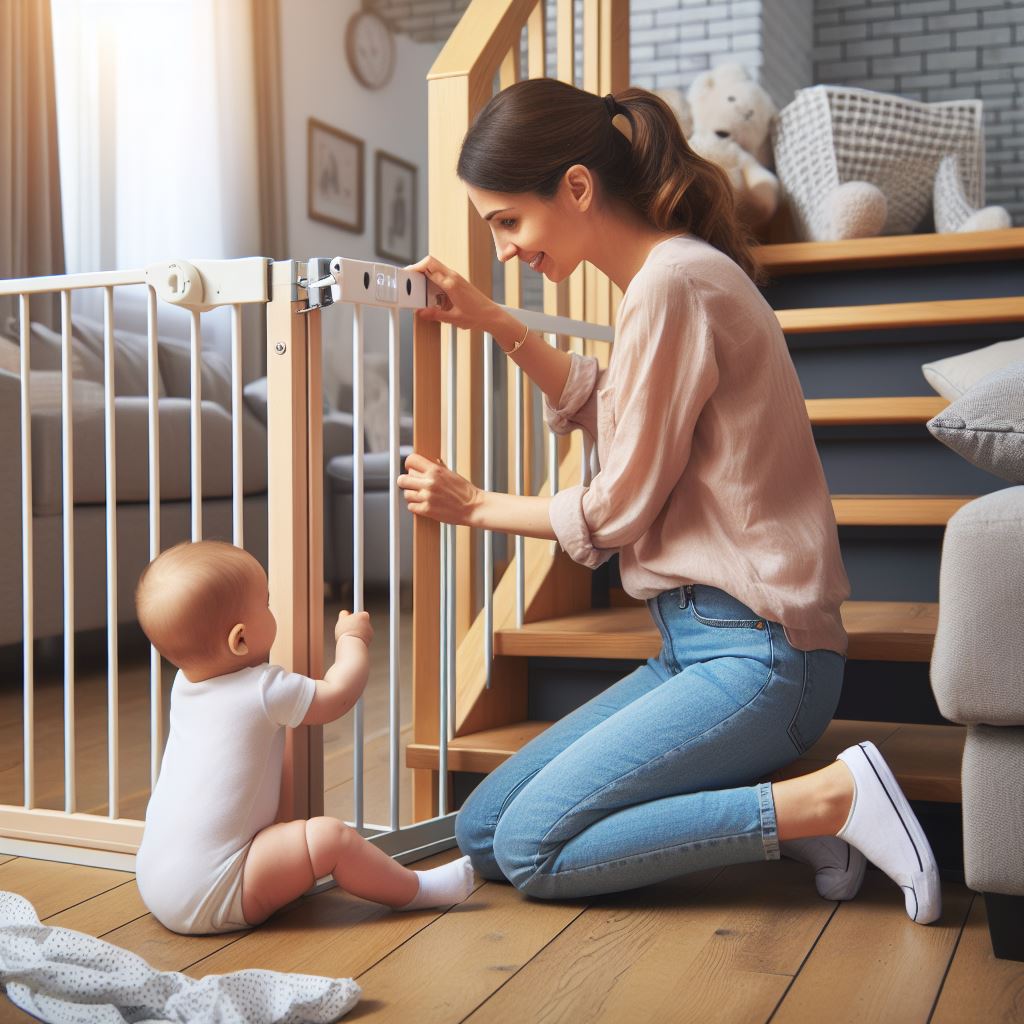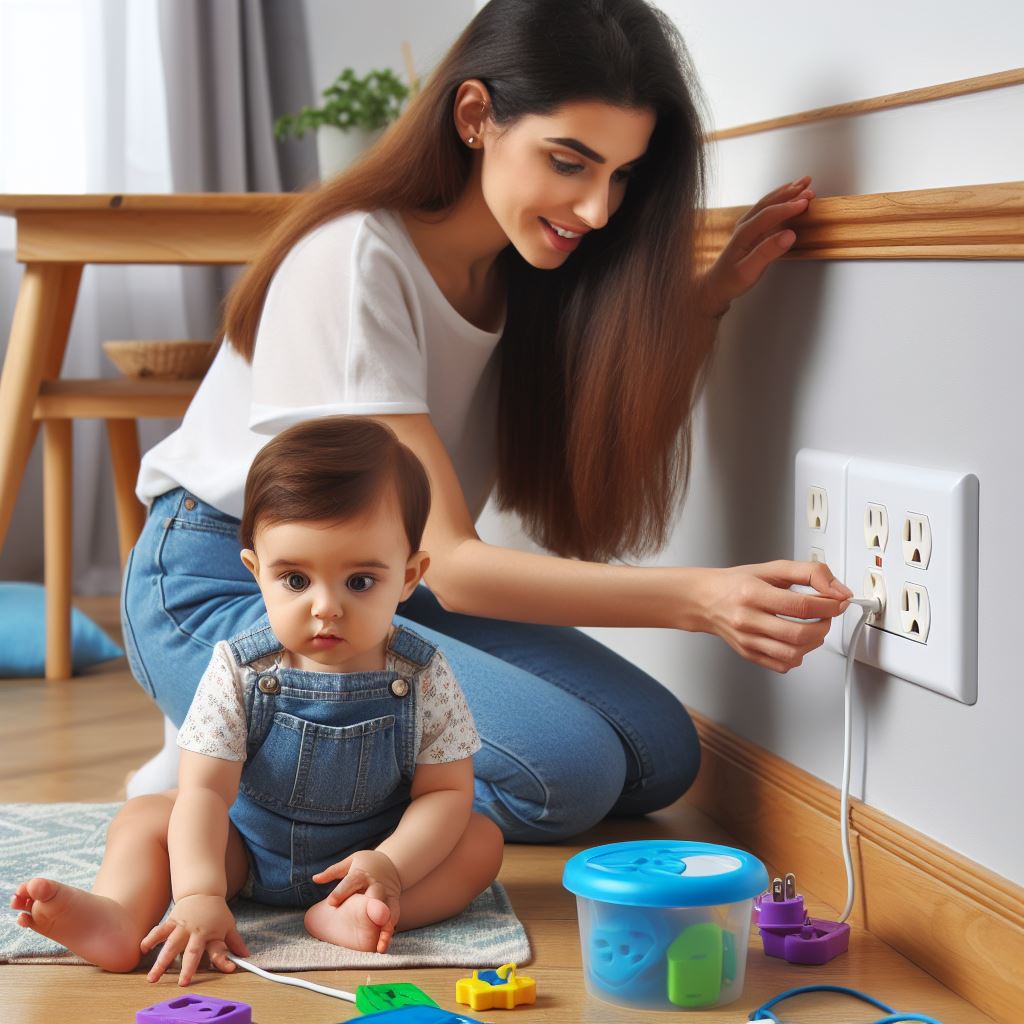It’s an exciting and happy occasion to welcome a new family member into your house, but it also means that you must make sure your child grows up in a secure setting. One of the most important things you can do to make your home safe for your kid to explore and develop without taking unwarranted risks is to baby-proof it. We’ll walk you through a thorough checklist in this in-depth guide to assist new parents with the necessary steps of baby-proofing your home.

Why Baby-Proofing Matters
Baby-proofing is a crucial aspect of parenting, involving the identification and mitigation of potential hazards to create a secure environment for infants and toddlers. This practice is essential for promoting a child’s healthy development, preventing accidents, and offering peace of mind to parents.
Curiosity Knows No Bounds. Babies investigate anything that comes within reach due to their innate curiosity. Babies can learn and play securely when potential hazards are foreseen and addressed through baby-proofing.
Preventing Accidents and Injuries. Baby-proofing your home lowers the possibility of falls, burns, and bruises from electrical outlets and sharp corners, making an environment safe for a child to grow up in.
Fostering Well-Being Growth. A haven promotes a child’s normal physical and mental growth and creates a happy setting for parents and their young children.
Peace of Mind for Parents. By giving parents a concrete method to take charge of their child’s safety, baby-proofing gives them peace of mind and lets them enjoy parenting without undue stress.
Adapting to Developmental Milestones. Baby-proofing is a continuous process that changes to meet the demands of a developing child and keeps the home secure at different phases of development.

Tips on Baby-Proofing Your Home
A new family member’s arrival is an exciting time that is full of joy and expectation. Amid the joy, parents must understand how crucial it is to baby-proof their houses. Here’s how you can baby-proof your home:
1. Start with a Room-by-Room Inspection
Before getting into the specifics, go through your house and mark any areas that might be dangerous. The kitchen, living room, and nursery are areas where your infant will spend the most time, so pay close attention to these areas.
2. Secure Furniture and Heavy Items
It’s common knowledge that babies like to pull themselves up on furniture. Make sure that large, heavy furniture pieces, such as dressers and bookcases, are firmly fixed to the wall to avoid unintentional overturning. To secure these objects and reduce the chance of injury, use furniture straps.
3. Install Safety Gates
Safety gates are a must-have to provide secure limits for your youngster. Put gates in place at the top and bottom of staircases and in doorways that lead to places your little explorer is not allowed to go.
4. Cover Electrical Outlets
Curious fingers may find their way to electrical outlets. Use plug-in protectors or outlet covers to shield your infant from the possible risks associated with electrical outlets. Throughout your house, make sure to cover all outlets that are accessible.
5. Keep Cords and Blind Strings Out of Reach
There is a risk of strangulation when using long or blind strings. Any loose cords should be tied up or cut, and cord wind-ups can help keep them out of reach. Wherever your infant will spend time, choose cordless window coverings.
6. Lock Away Hazardous Substances
Medications, household cleansers, and other potentially dangerous items should be kept out of reach and safely stored. If you want to keep your child from opening cabinets containing cleaning supplies or prescription drugs, you should think about installing cabinet locks.
7. Secure Windows
Put barriers or guards on your windows to avoid falls and mishaps. To deter climbing, place furniture away from windows, and keep an eye on your child whenever they are near windows.
8. Soften Sharp Edges and Corners
Babies are prone to falls and injuries as they get used to their environment. When using furniture with sharp edges, use corner protectors to lower the possibility of accidents. Countertops, coffee tables, and other low surfaces require extra caution.
9. Choose Baby-Friendly Flooring
To provide a cozy and secure space for your infant to crawl and play, choose flooring and rugs that are soft and non-slip. To avoid falls and slips, think about putting area rugs with non-slip padding on your hardwood flooring.
10. Check for Small Choking Hazards
Check your house frequently for small items that could choking hazards. Make a point of gathering up little objects that your infant might put in their mouth, such as buttons, coins, and little toys.
11. Secure Furniture with Sharp Corners
Think about fastening furniture with sharp corners to the wall in addition to employing corner guards. When your infant tries to stand or climb, anchor bookshelves, tables, and other objects that can go over. This added safety measure gives your house an additional layer of protection.
12. Invest in Child-Proof Latches for Cabinets and Drawers
Curiosity typically encourages babies to investigate every nook and corner. Put child-proof latches on drawers and cupboards to keep your child away from potentially dangerous objects. This is particularly crucial in the kitchen, as this is where cleaning supplies and sharp objects are usually kept.
13. Monitor Temperature and Water Safety
To prevent scalding, set the water heater to a safe temperature (around 120°F or 49°C) to ensure your baby’s safety during bath time. Never leave your baby unsupervised in the water, and use non-slip mats in the bathtub. Additionally, to control the temperature of the water, think about adding anti-scald devices to faucets.
14. Cover Sharp Furniture Edges
Beyond securing corners, inspect the furniture for any sharp edges that could pose a risk. Utilize edge bumpers to cover sharp corners on tables, cabinets, and other furniture items. This simple addition can help prevent injuries as your baby explores their surroundings.
15. Be Mindful of Small Objects
Small items that are capable of getting stuck in a baby’s mouth pose a choking risk. Keep an eye out for tiny objects like pennies, buttons, or little toys on the floor. Remember, newborns love to explore with their tongues, so it’s important to keep these small objects out of their reach.
16. Choose Safe Toys
Make sure your baby’s toys are age-appropriate and devoid of little bits that could cause a choking hazard. Seek for toys with safe construction, non-toxic materials, and rounded edges. Check toys for wear and tear regularly and throw away any that seem dangerous.
17. Install Door Stoppers
Doors can shut suddenly, putting small fingers at risk. Put in door stoppers to lessen the chance of pinched fingers by keeping doors from slamming shut. This is especially crucial in spaces where your child is probably going to be playing or crawling.
18. Secure Heavy Appliances
To avoid tipping, big appliances like TVs, microwaves, and other large objects should be fastened. To secure these objects to the wall and protect your infant from falling or pulling, use anti-tip brackets.
19. Create a Safe Sleeping Environment
A crib that complies with modern safety regulations should have slats that are spaced far enough apart to avoid snagging little limbs. Soft items, such as pillows and plush toys, should not be placed in the crib. When putting your baby to sleep, make sure they do so on their back to lower the chance of SIDS.
20. Stay Informed and Updated
Regularly reevaluate your baby-proofing strategies as your child develops and becomes more mobile. Keep yourself updated about new safety regulations and items that could improve your home’s security. You can help your child explore and grow in a secure setting by being proactive and flexible.
You’ll be well on your way to providing a safe and supportive home for your new family member if you carefully follow this extensive checklist. Remember that baby-proofing your home is a continuous process that needs to be updated frequently as your child achieves new developmental stages and demands close attention to detail. You can enter parenting with confidence knowing that your home is a safe haven for your priceless child if you take these steps.